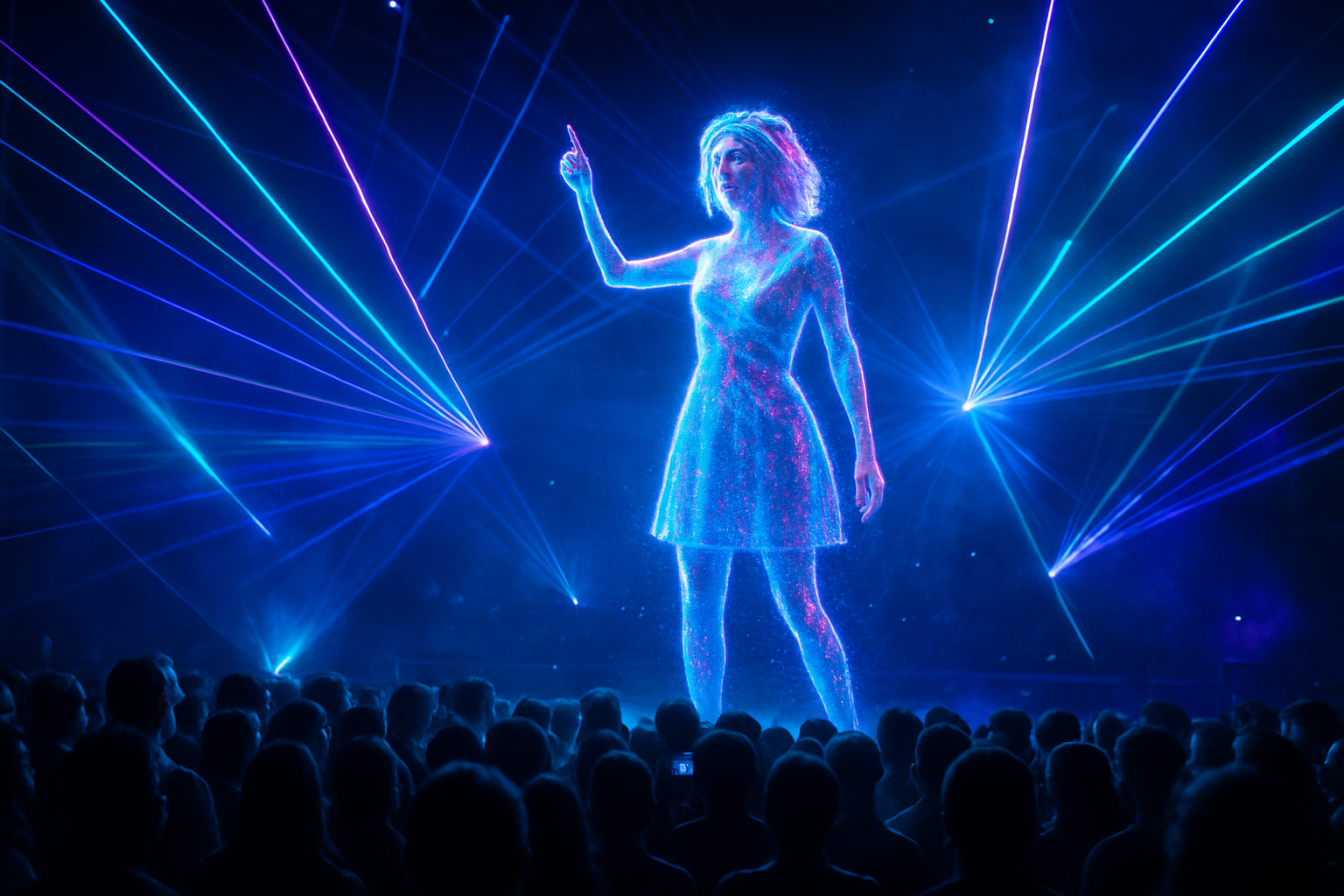Holographic Performers: The Future of Live Entertainment
In the ever-evolving landscape of live entertainment, a groundbreaking technology is reshaping the way we experience concerts, theater, and interactive performances. Holographic performers, once relegated to the realm of science fiction, have emerged as a revolutionary force in the entertainment industry. This cutting-edge technology is not only breathing new life into iconic performances of the past but also creating entirely new possibilities for artistic expression and audience engagement. As holographic technology continues to advance, it promises to redefine the boundaries of live entertainment and challenge our perceptions of reality and presence in the digital age.

Technological Breakthroughs
Recent years have seen significant leaps in holographic technology. High-powered lasers, advanced projection systems, and sophisticated software have combined to create increasingly realistic and interactive holographic performances. The development of volumetric displays and light field technology has further enhanced the depth and dimensionality of these digital performers. Additionally, improvements in real-time rendering and motion capture have allowed for more dynamic and responsive holographic presentations, blurring the line between pre-recorded content and live interaction.
Resurrecting Icons and Creating New Stars
One of the most talked-about applications of holographic technology in entertainment has been the resurrection of iconic performers. From Tupac Shakur’s appearance at Coachella to Whitney Houston’s posthumous world tour, holographic performances have allowed audiences to experience the magic of departed artists once again. This trend has sparked both excitement and ethical debates within the industry. While some view it as a celebration of artistic legacy, others question the implications of digitally recreating performances without the artist’s explicit consent.
Live Performances Reimagined
Beyond resurrecting past performances, holographic technology is opening up new avenues for creative expression in live entertainment. Contemporary artists are incorporating holographic elements into their shows, creating visually stunning and immersive experiences that were previously impossible. From larger-than-life projections to interactive digital environments, these performances are pushing the boundaries of what’s possible on stage. The technology also allows for remote performances, where artists can appear virtually in multiple locations simultaneously, potentially revolutionizing the concept of touring and global accessibility to live events.
The Impact on Theater and Opera
The world of theater and opera has also begun to embrace holographic technology. Productions are experimenting with holographic set designs, creating dynamic and changeable environments that can transform in an instant. Some companies are even exploring the use of holographic actors alongside live performers, opening up new possibilities for storytelling and character interactions. This fusion of traditional stagecraft with cutting-edge technology is breathing new life into classical works and inspiring innovative new productions.
Challenges and Controversies
As with any disruptive technology, the rise of holographic performers has not been without its challenges and controversies. Technical limitations, such as the need for specialized equipment and controlled lighting conditions, can restrict the venues and settings where holographic performances are feasible. There are also ongoing debates about the authenticity of holographic performances and whether they can truly capture the essence and spontaneity of live entertainment. Legal and ethical questions surrounding the use of an artist’s likeness and intellectual property rights in holographic form continue to be hotly debated within the industry.
The Future of Holographic Entertainment
Looking ahead, the potential for holographic technology in entertainment seems boundless. As the technology continues to improve, we can expect to see more seamless integration of holographic elements in live performances across various genres. The development of more portable and affordable holographic systems could democratize access to this technology, allowing smaller venues and independent artists to incorporate holographic elements into their shows. Furthermore, advancements in artificial intelligence could lead to more interactive and responsive holographic performers, capable of improvising and engaging with audiences in real-time.
Conclusion
Holographic performers represent a fascinating convergence of art and technology, offering new ways to experience and interact with live entertainment. As the technology matures and becomes more widely adopted, it has the potential to revolutionize the entertainment industry, creating immersive experiences that transcend the limitations of physical space and time. While challenges and ethical considerations remain, the creative possibilities offered by holographic technology are truly exciting. As we look to the future, it’s clear that holographic performers will play an increasingly significant role in shaping the landscape of live entertainment, offering audiences unprecedented spectacles and redefining what it means to attend a live performance in the digital age.





